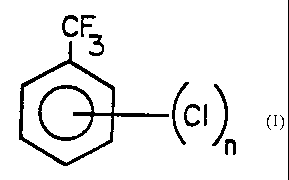Some of the information on this Web page has been provided by external sources. The Government of Canada is not responsible for the accuracy, reliability or currency of the information supplied by external sources. Users wishing to rely upon this information should consult directly with the source of the information. Content provided by external sources is not subject to official languages, privacy and accessibility requirements.
Any discrepancies in the text and image of the Claims and Abstract are due to differing posting times. Text of the Claims and Abstract are posted:
| (12) Patent: | (11) CA 2151139 |
|---|---|
| (54) English Title: | METHOD FOR SEPARATING CHLORINE FROM A MIXTURE OF GASES |
| (54) French Title: | METHODE POUR SEPARER LE CHLORE D'UN MELANGE DE GAZ |
| Status: | Expired and beyond the Period of Reversal |
| (51) International Patent Classification (IPC): |
|
|---|---|
| (72) Inventors : |
|
| (73) Owners : |
|
| (71) Applicants : |
|
| (74) Agent: | NORTON ROSE FULBRIGHT CANADA LLP/S.E.N.C.R.L., S.R.L. |
| (74) Associate agent: | |
| (45) Issued: | 2004-06-29 |
| (86) PCT Filing Date: | 1994-02-14 |
| (87) Open to Public Inspection: | 1995-01-05 |
| Examination requested: | 2001-02-08 |
| Availability of licence: | N/A |
| Dedicated to the Public: | N/A |
| (25) Language of filing: | English |
| Patent Cooperation Treaty (PCT): | Yes |
|---|---|
| (86) PCT Filing Number: | PCT/US1994/001927 |
| (87) International Publication Number: | US1994001927 |
| (85) National Entry: | 1995-06-06 |
| (30) Application Priority Data: | ||||||
|---|---|---|---|---|---|---|
|
Disclosed is a method of removing chlorine from a mixture of gases.
The mixture of gases is contacted with a liquid which contains a compound
having general formula (I) where n is 1 to 3, whereby chlorine in the mixture
of gases is absorbed by the liquid. The liquid is then heated to volatilize
the
chlorine and separate it from the liquid.
L'invention concerne un procédé pour extraire le chlore d'un mélange de gaz. Le mélange de gaz est mis en contact avec un liquide contenant un composé ayant la formule générale (I) dans laquelle n est compris entre 1 et 3. Dans ce procédé, le chlore du mélange de gaz est absorbé par le liquide. Le liquide est ensuite chauffé pour volatiliser le chlore et le séparer du liquide.
Note: Claims are shown in the official language in which they were submitted.
Note: Descriptions are shown in the official language in which they were submitted.

2024-08-01:As part of the Next Generation Patents (NGP) transition, the Canadian Patents Database (CPD) now contains a more detailed Event History, which replicates the Event Log of our new back-office solution.
Please note that "Inactive:" events refers to events no longer in use in our new back-office solution.
For a clearer understanding of the status of the application/patent presented on this page, the site Disclaimer , as well as the definitions for Patent , Event History , Maintenance Fee and Payment History should be consulted.
| Description | Date |
|---|---|
| Time Limit for Reversal Expired | 2014-02-14 |
| Letter Sent | 2013-02-14 |
| Grant by Issuance | 2004-06-29 |
| Inactive: Cover page published | 2004-06-28 |
| Letter Sent | 2004-04-21 |
| Amendment After Allowance Requirements Determined Compliant | 2004-04-21 |
| Pre-grant | 2004-04-14 |
| Inactive: Final fee received | 2004-04-14 |
| Inactive: Amendment after Allowance Fee Processed | 2004-04-07 |
| Amendment After Allowance (AAA) Received | 2004-04-07 |
| Notice of Allowance is Issued | 2003-10-15 |
| Notice of Allowance is Issued | 2003-10-15 |
| Letter Sent | 2003-10-15 |
| Inactive: Approved for allowance (AFA) | 2003-10-03 |
| Letter Sent | 2001-04-12 |
| Inactive: Status info is complete as of Log entry date | 2001-04-12 |
| Inactive: Delete abandonment | 2001-04-12 |
| Inactive: Application prosecuted on TS as of Log entry date | 2001-04-12 |
| Inactive: Adhoc Request Documented | 2001-04-12 |
| Inactive: Abandon-RFE+Late fee unpaid-Correspondence sent | 2001-02-14 |
| All Requirements for Examination Determined Compliant | 2001-02-08 |
| Request for Examination Requirements Determined Compliant | 2001-02-08 |
| Application Published (Open to Public Inspection) | 1995-01-05 |
There is no abandonment history.
The last payment was received on 2003-12-23
Note : If the full payment has not been received on or before the date indicated, a further fee may be required which may be one of the following
Patent fees are adjusted on the 1st of January every year. The amounts above are the current amounts if received by December 31 of the current year.
Please refer to the CIPO
Patent Fees
web page to see all current fee amounts.
Note: Records showing the ownership history in alphabetical order.
| Current Owners on Record |
|---|
| OCCIDENTAL CHEMICAL CORPORATION |
| Past Owners on Record |
|---|
| EDWARD A. ROWE |